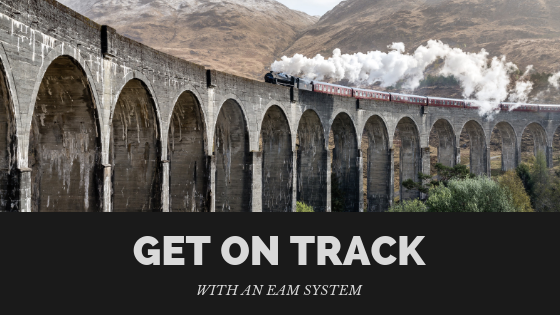Rail freight transport is steadily increasing across Canada and the United States. As more industries choose to ship their product this way, railway services have been keeping up by expanding their fleet and infrastructure.
Digital information in that field has also grown. Like other asset-intensive industries such as oil and gas, rail companies need specific features in their maintenance programs that might not be available with out-of-the-box solutions. Whether you are a company looking to adopt a new EAM software or migrating your information over to a modern one, here are a few key features to look out for to ensure you get the system that’s right for you.
Geolocation:
Tagging assets electronically and tracking their location in real-time is crucial for rail operations. Equipment such as locomotives and freight cars move frequently between facilities, which can make it difficult to find them when maintenance is required. By logging them through a CMMS with GPS capabilities, more time can be put towards keeping your trains on the track.
Device mobility is also a necessary feature. Accessing details and specifications through any device is crucial when attempting to locate parts and equipment, especially when in a remote area or isolated from a service centre. Seek a solution that has a portable version of their program.
Fleet and Fuel Management:
Asset management is a standard function of major CMMS’ such as Maximo and SAP. When it comes to rail services, having a feature that organizes assets into fleets is incredibly beneficial. It helps keeps track of what engines and cars are currently in service or under maintenance. Having a digital infrastructure in place for railway related assets can help with industry-specific operations, such as handling storage tanks and refuelling.
Fuel purchasing integration within an EAM system is another feature that is beneficial to freight companies. Leading software providers should be able to customize their services to complement these vital parts of your operations.
Infrastructure Maintenance Modules:
Equipment logged into EAM software is typically organized into hierarchies that are divided by location, region, plant and machinery. Rail infrastructure is slightly different; assets such as routes and track sections are divided into sectors rather than being filed into a specific facility. A module for a CMMS that is customized to reflect the nature of rail equipment would help workers adapt to a newer system, as they would already be familiar with the classification of equipment, getting them out on the ground much faster.
An example of this is IBM Maximo’s Linear Asset Management application. Users can view segments of a track electronically, which show where crossings and signals are located. It also visualizes “linear relationship”; key intersections or roads that run parallel. Other key geographical information such as bridges and tunnels can also be modelled this way.
How We Can Help:
If you are on the verge of purchasing a new EAM or are upgrading your system to prepare for the future, high-quality asset data is paramount to your operations. NRX AssetHub works with asset-intensive companies, including railway services, to optimize, cleanse and validate their data. With features such as legacy information migration and customized asset hierarchies, our service integrates with industry-leading CMMS to ensure that you get your data right. If you would like to know how we can help you, book a demo or contact us at 1-877-603-4679.
Share this article

